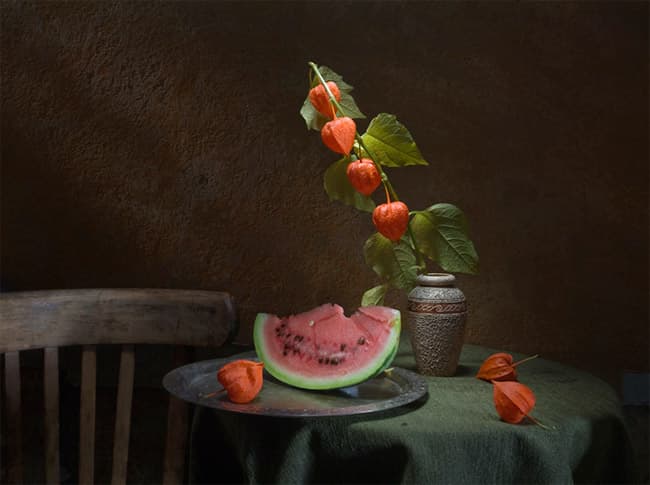Huge scarlet lanterns which are magnificently attractive in the garden and then can be cut and dried to be used all through the winter to decorate naturally, your house. Easy, thriving in almost any soil, sun or shade. Lanterns late summer.
Sowing Instructions: Sow in spring at +20°C in a good seed compost. Sow seed on surface of compost and gently firm down compost. Keep soil damp but not wet. Sealingina polythene bag after sowing is helpful. Do not exclude light which is beneficial to germination. Germination usually takes 21-30 days.
Growing Instructions: When seedlings are large enough to handle, transplant and grow on in cooler conditions. Plant out in a reserve border and move to their final positions in autumn planting 60 cm apart in ordinary well drained soil and sun.
Aftercare Instructions: To dry, cut the stems when the lanterns start to show colour and hang upside down in a light airy shed.

Physical Characteristics.
Hardy perennial growing to 0,8 m by 0,95 m. (It is hardy to zone 6 and is frost tender).
Ideal For: Border, Dried Flower.
Flowers: Late Summer.
Germination: Easy.
Aftercare: Easy.
The flowers are hermaphrodite (have both male and female organs) and are pollinated by Bees. We rate it 2 out of 5 for usefulness. The plant prefers acid, neutral and basic (alkaline) soils. It can grow in semi-shade (light woodland) or no shade. It requires moist soil. Habitats and Possible Locations: cultivated beds.
Cultivation details: succeeds in any well-drained soil in full sun or light shade. The fully dormant plant is hardy in most of Britain, though the young growth in spring can be damaged by late frosts. A very ornamental plant though it can be invasive. The sub-species Physalis alkekengi franchetti. Mak. (sometimes treated as a separate species) is a more vigorous form of the species with larger fruits. Slugs are very fond of the new growth in spring and can destroy even quite large clumps.
Propagation Seed - sow March/April in a greenhouse only just covering the seed. Germination usually takes place quickly and freely. Prick out the seedlings into individual pots of fairly rich soil when they are large enough to handle and plant them out in early summer. Diurnal temperature fluctuations assist germination.
Division in spring. Very easy, larger divisions can be planted out direct into their permanent positions. We have found that it is better to pot up the smaller divisions and grow them on in light shade in a cold frame until they are well established before planting them out in late spring or early summer. Basal cuttings in early summer. Harvest the shoots with plenty of underground stem when they are about 8-10 cm above the ground. Pot them up into individual pots and keep them in light shade in a cold frame or greenhouse until they are rooting well. Plant them out in the summer.


Strawberry groundcherry, winter cherry, Cape gooseberry, Chinese lantern plant, Chinese lanterns, Japanese lantern, strawberry tomato. Bot. syn.: Physalis franchetii Mast.











